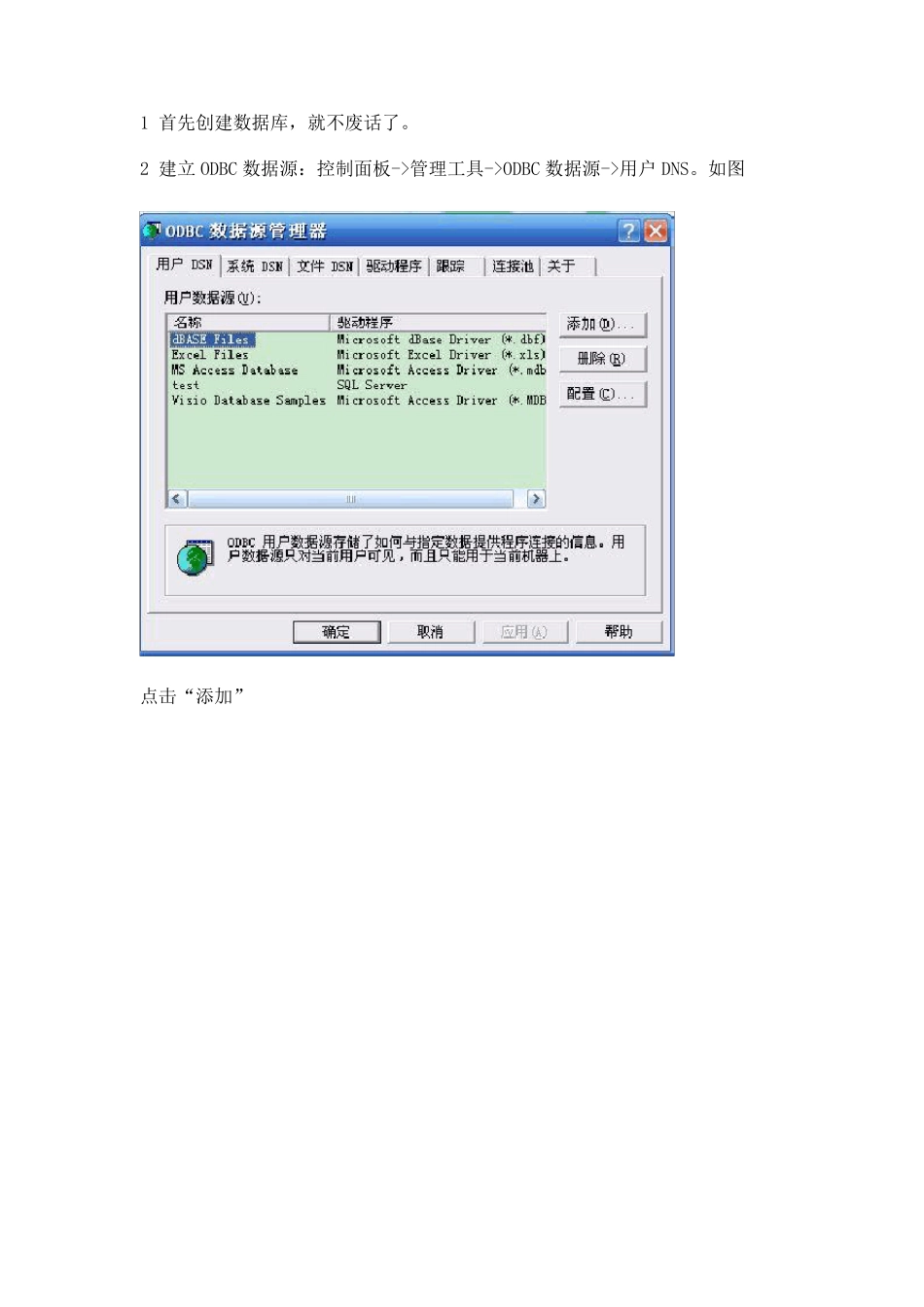1 首先创建数据库,就不废话了。 2 建立ODBC 数据源:控制面板->管理工具->ODBC 数据源->用户DNS。如图 点击“添加” 旋转“SQL Server”,“完成”。 数据源名称--编程时要用到,可任意命名。服务器选择自己指定的 选择默认数据库,下一步 下一步 旋转SQL Server 验证,完成。 3 编程(来自网络)这段程序已经过我验证。 sourceName=input('Enter the source Name:','s'); %获取数据源的名称(dbtest) Timeout=logintimeout(5); %允许登录连接时间最长为5s conn=database(sourceName,'sa','123'); %获取数据库连接对象 ping(conn) %测试数据库连接状态 dbmeta=dmd(conn); %获取数据元对象 t=tables(dbmeta,'tutorial'); %获取cata 为tutorial 的表名 [trow,tcolumn]=size(t); %获取返回数组的大小 index=1; for i=1:trow %由于表中既包含了系统表格 if strcmp(t{i,2},'TABLE') %又包含了用户表格,需要在其中 tablename{1,index}=t{i,1}; %找出用户表格,对t 数组的每一行 index=index+1; %的第二个元素判断是table 则为用 end %户表。 end tabletosee=input('Which one would you want to use? ','s'); %获取欲查看的表格的名称 sql=['select * from ',tabletosee]; %构造查询的sql 语句 curs=exec(conn,sql); %执行该sql 语句 setdbprefs('DataReturnFormat','cellarray'); %设定数据返回格式 curs=fetch(curs); %获取结果集对象 numrows=rows(curs); %获取返回数据的行数 numcols=cols(curs); %获取返回数据的列数 disp('--------------------------------------------------------------'); %在屏幕中显示表格信息 fprintf(' Information of Table %s . ',tabletosee); disp('--------------------------------------------------------------'); fprintf('number of rows=%d, number of columns=%d ',numrows,numcols); disp(' FieldName typeName typeValue columnWidth nullable'); for k=1:numcols %分别获取相关信息 attributes=attr(curs,k); tableinfo{k,1}=attributes.fieldName; %获取字段名称 tableinfo{k,2}=attributes.typeName; %获取字段类型名 tableinfo{k,3}=attributes.typeValue; %获取字段类型代码 tableinfo{k,4}=attributes.columnWidth; %获取字段的宽度 tableinfo{k,5}=attributes.nullable; %...


